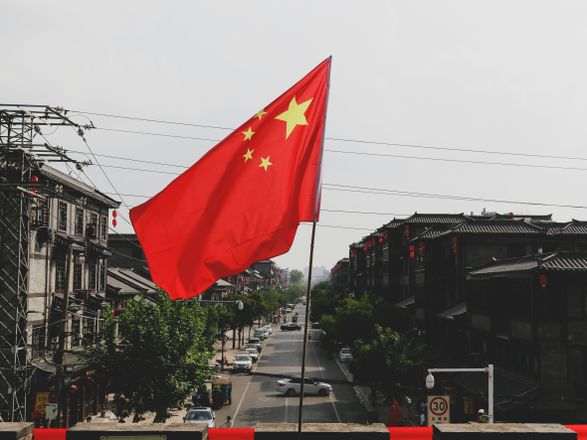23.05.2025
A Decade of Economic Tension: The U.S.-China Trade War and Its Global Impacts
Over the last decade, the global economy has been rocked by a historic standoff between the world’s two largest economies—the United States and China. Triggered by long-standing trade imbalances, intellectual property disputes, and strategic rivalry, this economic confrontation peaked under President Donald Trump and has since evolved into a multifaceted competition. From high tariffs to technology bans, the trade war has left a lasting imprint on global supply chains, business confidence, and geopolitical alliances.
This blog revisits the trajectory of the U.S.-China trade war, focusing on the critical phase under President Trump’s administration and what it means for the world today.
1. Origins of a Trade Rift
Tensions between the U.S. and China had simmered for years, with American officials and economists criticizing China’s trade practices. Chief among the concerns were:
- Chronic U.S. trade deficits with China
- Accusations of intellectual property (IP) theft and forced technology transfers
- Restrictions on foreign firms entering Chinese markets
- China’s support for state-owned enterprises and industrial policy
When Donald Trump took office in 2017, he made addressing these imbalances a central part of his "America First" agenda. Unlike previous administrations that preferred negotiations within the framework of the World Trade Organization (WTO), Trump adopted a more confrontational, unilateral approach.
2. Tariff Battles Begin
In March 2018, the Trump administration announced tariffs on steel and aluminum imports under Section 232 of the Trade Expansion Act, citing national security. While these applied to multiple countries, they were a prelude to more specific measures aimed at China.
Later that year, the U.S. escalated by invoking Section 301 of the Trade Act of 1974, targeting China for IP violations and unfair trade practices. The result: sweeping tariffs imposed in multiple phases:
- First wave (July 2018):25% tariffs on $34 billion worth of Chinese goods.
- Second wave (August 2018):Additional $16 billion taxed.
- Third wave (September 2018):10% tariffs on $200 billion in imports, later raised to 25%.
- Final wave (September 2019):15% tariffs on $112 billion of mostly consumer goods.
In total, the U.S. placed tariffs on over $360 billionworth of Chinese goods. China responded in kind with its own tariffs on about $110 billionin U.S. exports, targeting key sectors like agriculture, automobiles, and energy.
These measures effectively launched a full-blown trade war, disrupting decades of trade liberalization and shaking the foundations of the global economy.
3. Impact on the U.S. and Chinese Economies
U.S. Economy:
- Agriculture:Farmers were hit hard. China halted purchases of American soybeans and other agricultural products, prompting Washington to distribute $28 billionin federal aid to offset losses.
- Manufacturing and Retail:Tariffs increased input costs, causing price hikes or profit reductions. Some firms delayed investments or moved supply chains out of China.
- Consumers:Though the administration insisted China was paying the tariffs, studies showed that much of the cost was passed on to U.S. consumers and businesses.
Chinese Economy:
- Slowed GDP growth due to declining exports to the U.S.
- Pressure on China’s industrial production and global manufacturing image.
- Accelerated domestic innovation and a shift to new export markets.
4. Phase One Trade Deal
In January 2020, after months of negotiations, Trump and Chinese Vice Premier Liu He signed the Phase One Trade Agreement, which aimed to ease tensions:
- China committed to purchasing $200 billionin additional U.S. goods and services over two years.
- Both countries agreed to enhance IP protections and improve transparency in currency practices.
- The U.S. postponed further tariffs and reduced some existing ones.
Despite the symbolic success, China ultimately fell short of its purchasing commitments, especially due to the COVID-19 pandemic. Moreover, the core structural issues—state subsidies, tech transfer, and market access—remained unresolved.
5. Technology Becomes a Battlefield
The trade war expanded beyond tariffs into a battle over technological dominance:
- The U.S. blacklisted Huaweiand ZTE, restricting their access to American tech components.
- Chinese apps like TikTokand WeChatcame under scrutiny for data privacy and national security concerns.
- Export restrictions were imposed on advanced semiconductor equipment and AI technologies.
In retaliation, China accelerated efforts to build self-sufficiencyin key sectors, particularly semiconductors, and adopted the "Dual Circulation"strategy—focusing on domestic consumption while securing foreign trade resilience.
6. The Biden Administration's Approach
When President Joe Biden took office in 2021, he inherited Trump’s trade war and chose continuity with nuance. While maintaining most tariffs and tech bans, Biden emphasized:
- Working with allies like the EU and Japan on a unified China strategy.
- Focusing on “de-risking”rather than decoupling, especially in critical sectors.
- Investing domestically in manufacturing, semiconductors (CHIPS Act), and green tech.
Rather than seeking a Phase Two deal, Biden’s team adopted a strategic competitionmodel—aiming to outcompete China through innovation and alliances rather than solely through punitive measures.
7. Global Ramifications and Supply Chain Shifts
The U.S.-China trade war forced companies and countries to rethink global supply chains. Many firms began “China+1” strategies, relocating manufacturing to Vietnam, India, or Mexico to reduce reliance on China.
Other consequences include:
- Inflationary pressuresglobally due to higher costs of goods.
- Disruption of tech ecosystems, especially in chip production and rare earths.
- Trade diversion, as non-tariffed countries like Taiwan and ASEAN nations benefited from redirected trade flows.
8. Are We Entering a New Cold War?
While not a Cold War in the classic sense, the current U.S.-China economic rivalry features many parallels:
- Ideological competition (liberal democracy vs. authoritarian capitalism)
- Competing global standards in technology, finance, and data governance
- Strategic alliances (QUAD, AUKUS, BRICS expansion)
Complete economic decouplingremains unlikely, but selective disentanglingin sensitive sectors is becoming the norm. Both countries are actively hedging against economic dependencies that could become geopolitical liabilities.
9. Trump's 2025 Tariff Escalation: A Renewed Trade War with China
In 2025, President Donald Trump reignited trade tensions with China through a series of aggressive tariff measures, marking a significant escalation in the ongoing economic rivalry between the two nations.
Escalation of Tariffs
In April 2025, the Trump administration announced a substantial increase in tariffs on Chinese imports. The minimum tariff rate was raised to 145%, a significant jump from previous levels. This move was justified by the administration as a response to China's alleged lack of respect for global markets and failure to address issues such as intellectual property theft and trade imbalances.
The heightened tariffs had immediate repercussions on global markets. Major indices experienced volatility, with companies heavily reliant on Chinese manufacturing facing increased costs. For instance, Apple Inc. was directly impacted, as the administration threatened a 25% tariff on iPhones not manufactured in the U.S., pressuring the company to shift its production domestically.
In response, China imposed its own set of tariffs on U.S. goods, targeting key sectors such as agriculture. Duties of up to 15% were levied on American agricultural products, including soybeans and beef, aiming to exert pressure on the U.S. economy and political landscape.
These developments have raised concerns about a potential slowdown in global economic growth. Economists warn that the escalating trade war could lead to stagflation, characterized by stagnant economic growth and rising inflation. Businesses are grappling with increased uncertainty, leading to cautious investment and hiring decisions.





